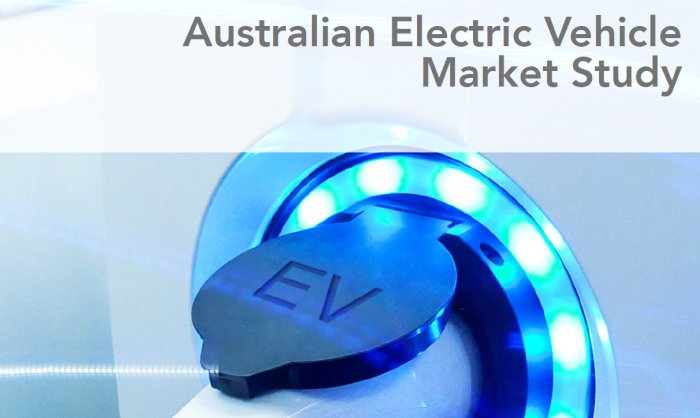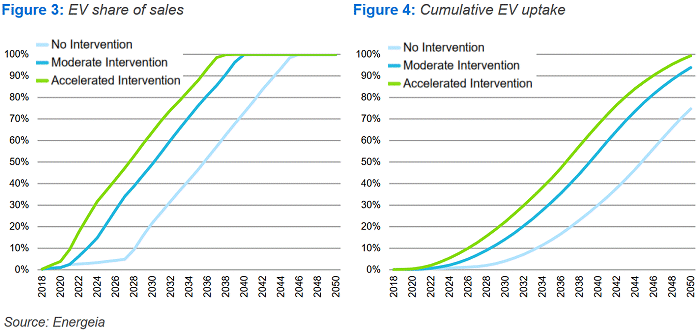
While electric vehicles only make up 0.1 per cent of new car sales in Australia currently, a new report says EV uptake has the potential to start taking off soon and make up 90 percent of all cars and light commercial vehicles on Australian roads by 2050.
The very optimistic prediction is based on new modelling produced for the Clean Energy Finance Corporation (CEFC) and Australian Renewable Energy Agency (ARENA) by Energeia.
It sees a surge in electirc vehicle sales from as early as 2021 – assuming of course the right combination of incentives, vehicles on offer and the infrastructure to support them – primarily recharging stations.
The report outlines three scenarios.
No intervention
Uptake driven solely by the economics of EVs manufactured overseas and shipped to Australia. EV uptake starts to take off around 2027, but reaching close to 100% of all new vehicle sales extends past 2040.
Moderate intervention
This would involve actions such as:
- “changes that reduce the EV price premium” (e.g. subsidies1 and removal of stamp duty).
- state and local governments becoming fleet buyers of EVs.
- easing of regulations on imports.
- dedicated transit lanes.
- discounts on vehicle registration and tolls
- public access quick charging infrastructure.
- a wider range of models available.
Under this scenario, sales accelerate in 2021 and reach 50 per cent of new car sales by 2030, with EV’s comprising more than 90 per cent of Australia’s fleet by 2050.
Accelerated Intervention
This involves the measures in the moderate intervention scenario applied more rapidly and with a higher level of support, along with a larger range of EV models available to Australian drivers. Additionally, it would require decreasing availability of internal combustion engine (ICE) vehicles and a total ban on ICE sales being implemented towards the end of the projection period.
Under the accelerated model, EVs make up 100% of new car sales around 2037/2038.
Public Charging Infrastructure Required
Energeia estimates that in a scenario where all new vehicles sales are EV’s, this will require a network of approximately 28,500 public access fast charging points across Australia. To build that network would require around $1.7 billion of investment.
“This research shows that we can increase the uptake of EVs in a way that benefits drivers as well as the environment. It’s about lowering prices, supporting more models and creating a charging network,” said CEFC CEO Ian Learmonth.
Mr. Learmonth said the transition to electric vehicles is inevitable and that some vehicle manufacturers have indicated they will cease production of pure ICE vehicles in the years ahead. General Motors is an example of an auto maker that says it believes in an all-electric future. This view has probably been helped along with announcements from countries including India, France, Britain and Norway that they will be banning the sale of petrol diesel powered vehicles.
The report states there are currently five EV models available in Australia, but this could grow to seven by the end of this year and up to 20 by 2020. Both the moderate and accelerated scenarios assume more models being available.
You can download the full Energeia report here or view the CEFC Clean Energy Snapshot on EVs here.
With the uptake of EV’s will also come increasing demand for bigger solar power systems. SQ’s Ronald posted an article a few months back on the topic of how many solar panels you’ll need to charge an electric car.
Related:
– Why Electric Cars Will Roll Over The Competition
Footnotes
- Ronald shared his thoughts on this a few months back in his article – Should Electric Cars Be Subsidised? ↩


 RSS - Posts
RSS - Posts



Speak Your Mind